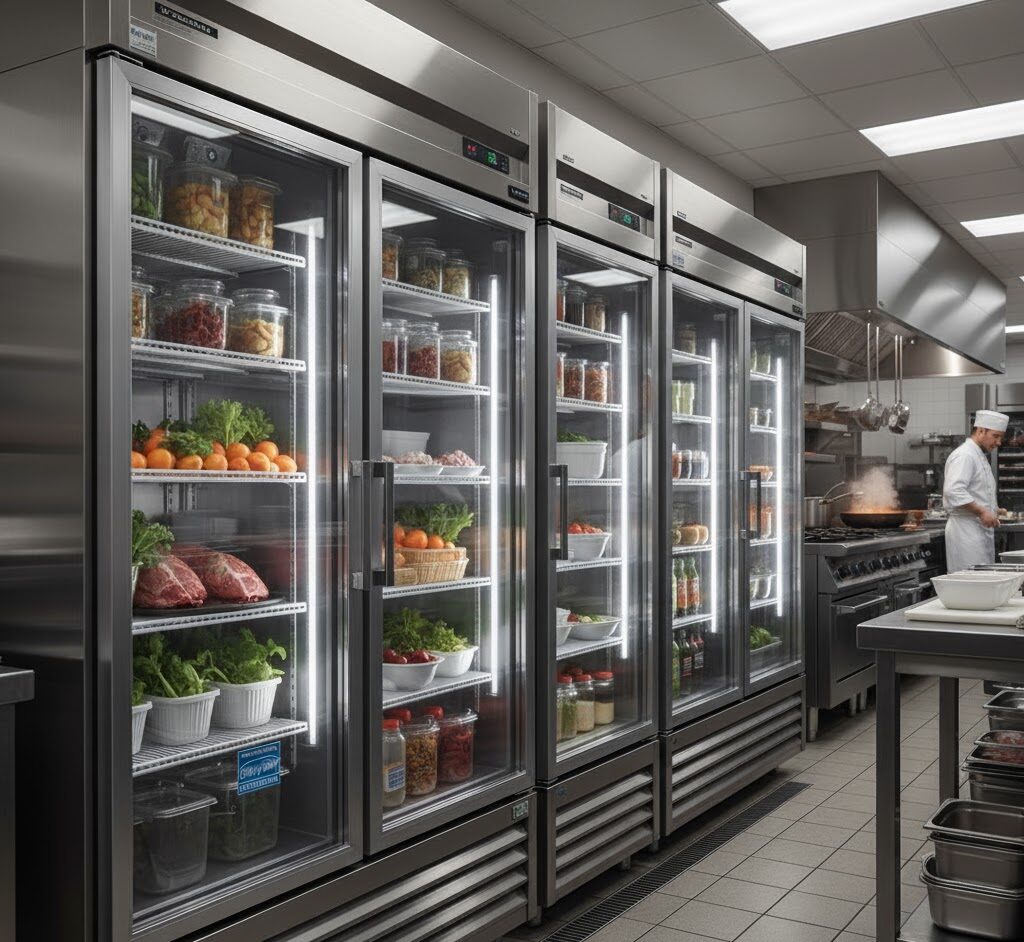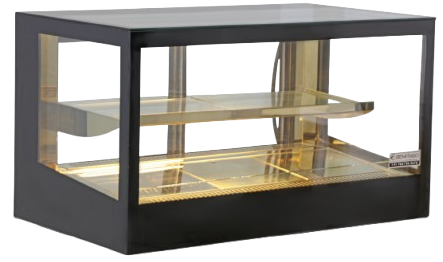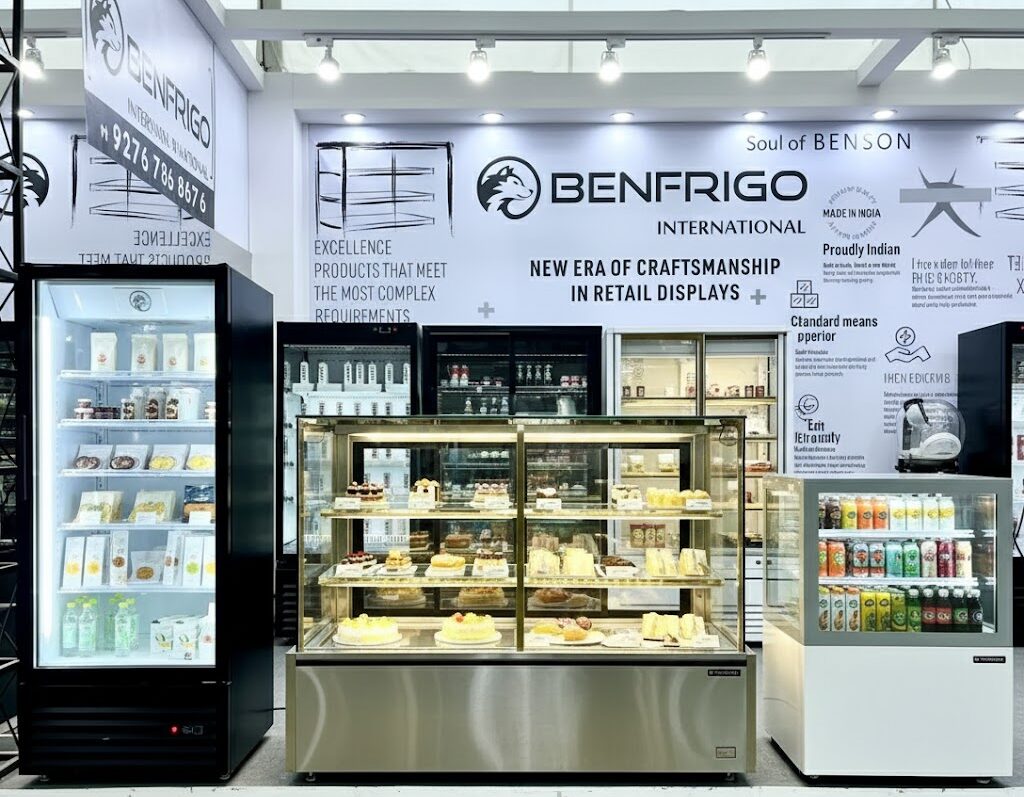A Complete Guide to Selecting the Best Fridge for Supermarkets
October 8, 2025 By: admin

In the fast-paced world of retail, the freshness and visual appeal of your products play a huge role in attracting customers and boosting sales. One of the most important investments a retailer can make is in high-quality refrigeration. The right cooling system not only preserves perishable goods but also enhances the shopping experience by showcasing products in the most appealing way. Whether you manage a small grocery store or a large retail outlet, selecting the right supermarket fridge is crucial for your business success.
Why Refrigeration Matters in Supermarkets
Every product on display in a supermarket has an ideal temperature at which it stays fresh, safe, and appealing. Dairy, beverages, meat, frozen goods, and even ready-to-eat meals require specific cooling conditions. Proper refrigeration maintains these optimal temperatures consistently, preventing spoilage and reducing waste.
But refrigeration in supermarkets isn’t just about cooling — it’s about presentation, hygiene, and energy efficiency. A well-designed system helps organize products neatly, improves customer visibility, and supports an eco-friendly approach by consuming less power. Modern refrigeration technology has evolved to meet these diverse needs, offering advanced solutions tailored for different store sizes and product categories.
Different Types of Supermarket Refrigeration Units
Supermarkets today use a variety of display and storage refrigerators designed for specific purposes. Understanding each type will help you choose what fits best in your layout.
-
Upright Display Chillers
These are the tall, glass-fronted units you often see stocked with beverages, dairy products, and packaged foods. Their vertical design makes efficient use of space while offering excellent visibility for customers. -
Serve Over Counters
Commonly found in bakeries, delis, and meat sections, these counters allow staff to serve customers directly while keeping food items at safe temperatures. They also create an interactive buying experience. -
Open Multideck Display Fridges
Perfect for grab-and-go items such as salads, drinks, and sandwiches. The open design encourages impulse purchases and is ideal for high-traffic areas. -
Freezer Cabinets
These are essential for storing frozen products like ice cream, frozen meat, and ready-to-cook meals. Energy-efficient freezers with transparent doors help customers browse easily without opening the unit. -
Countertop Chillers
Compact and ideal for displaying promotional or high-margin items near the checkout counters, these chillers enhance visibility while using minimal space.
Each of these units plays a distinct role in ensuring your supermarket’s efficiency, hygiene, and sales performance.
Factors to Consider When Selecting a Fridge for Your Supermarket
Choosing the right refrigeration equipment involves more than just size or price. Here are the key factors to keep in mind:
1. Product Type and Storage Needs
Every product category has specific temperature and humidity requirements. For example, meat and dairy need colder temperatures than fruits and vegetables. Categorize your products first, and select refrigeration systems that align with each section’s storage demands.
2. Energy Efficiency
Modern refrigeration systems are designed to consume less energy while maintaining stable cooling. Look for models with energy-saving compressors, LED lighting, and automatic defrost functions. Over time, these features can significantly lower your electricity bills and reduce your carbon footprint.
3. Design and Aesthetics
A well-designed fridge adds to the overall shopping experience. Sleek glass panels, internal lighting, and easy-to-clean materials can make a big difference. Customers are naturally drawn to visually appealing displays, which can increase product turnover.
4. Space Optimization
Supermarkets vary greatly in layout. You should choose units that fit seamlessly into your available floor plan. Compact or modular designs help maximize space, allowing you to display more products without making the area feel cluttered.
5. Temperature Consistency
Consistent cooling is non-negotiable in food retail. Opt for units with advanced airflow systems that ensure even temperature distribution across all shelves. Uneven cooling can lead to product spoilage, affecting both your inventory and your reputation.
6. Maintenance and Serviceability
A reliable refrigeration system should be easy to maintain. Units with removable shelves, accessible condensers, and automatic defrosting make cleaning and servicing much simpler. Always consider the availability of technical support and replacement parts before purchasing.
7. Compliance and Safety Standards
Always ensure that your refrigeration equipment complies with food safety and environmental standards. Look for certifications that confirm the unit’s refrigerant type, energy rating, and material quality.
How Good Display Design Increases Sales
Visual merchandising plays a vital role in driving supermarket sales. When items are displayed attractively inside a display supermarket fridge, customers are more likely to stop, browse, and purchase. Clean lines, bright lighting, and well-arranged products create a sense of freshness and abundance.
Strategic placement of refrigerators can also influence buying patterns. For instance, positioning chilled beverages near the checkout counter encourages impulse purchases, while open display units near the entrance can highlight fresh, ready-to-eat products. A thoughtful combination of lighting, visibility, and temperature control transforms your refrigerated section into an effective marketing tool.
Sustainability and Green Cooling Solutions
The refrigeration industry is evolving rapidly toward environmentally friendly technologies. Supermarkets today can opt for energy-efficient systems using eco-safe refrigerants that reduce greenhouse gas emissions. These modern units are designed for long-term sustainability while keeping operating costs low.
Features like night blinds, motion sensors for lighting, and inverter compressors contribute to both energy savings and extended equipment lifespan. Investing in such sustainable solutions not only benefits the environment but also improves your brand image among eco-conscious consumers.
Common Mistakes to Avoid When Buying a Supermarket Fridge
Even experienced retailers can make costly mistakes when choosing refrigeration equipment. Here are a few to watch out for:
-
Ignoring layout planning: Placing too many large fridges can block customer flow. Always plan your layout first.
-
Overlooking maintenance needs: Not every unit is easy to clean or repair; choose practical designs.
-
Buying without assessing power requirements: Some commercial fridges require higher voltage connections.
-
Choosing price over quality: Low-cost units may lead to higher repair expenses in the long run.
By avoiding these pitfalls, you ensure your investment remains productive and reliable for years.
Installation and After-Sales Support
Proper installation is as crucial as the equipment itself. Professional setup ensures that temperature calibration, electrical safety, and airflow positioning are done correctly. Many suppliers also offer after-sales services that include periodic maintenance, troubleshooting, and performance optimization. Establishing a service plan right from the beginning helps minimize downtime and ensures your fridges perform efficiently year-round.
Final Thoughts
In a highly competitive retail environment, efficient refrigeration is more than just a necessity — it’s a business strategy. The right cooling units enhance product appeal, maintain quality, and encourage repeat purchases. Whether you are setting up a new store or upgrading your existing layout, take time to evaluate your requirements carefully.
A well-chosen fridge system keeps your inventory fresh, supports sustainability, and creates a shopping experience your customers will appreciate. By prioritizing design, efficiency, and reliability, you can transform your store into a space where freshness truly meets convenience.



Leave a Comment
Your email address will not be published. Required fields are marked *